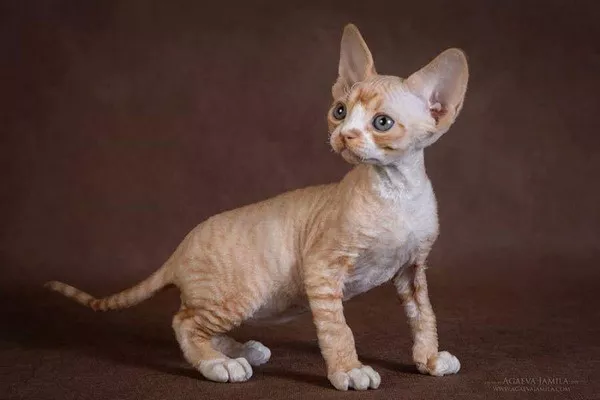Calico cats, with their distinctive tri-color coats—typically a patchwork of orange, black, and white—are not a specific breed but a coloration that occurs across many breeds. This coloration is most commonly found in females due to the genetic characteristics associated with the X chromosome. Known for their vibrant personalities and striking appearance, calico cats are popular among cat enthusiasts. This article explores the suitability of calico cats as house pets, their personality traits, and provides essential training tips to foster a harmonious home environment.
Understanding Calico Genetics and Temperament
Genetic Background: The calico pattern is not breed-specific but is a genetic trait linked to the X chromosome. The presence of three colors, typically orange, black, and white, is a manifestation of a genetic trait known as “X-inactivation.” Most calico cats are female; males are rare and often sterile.
General Temperament: Calico cats are often described as spirited, sassy, and independent. While individual personalities vary, many calico owners report that their pets have a “tortitude”—a term coined to describe the unique blend of a tortoiseshell’s feisty and strong-willed nature, which calicos often share. Understanding these traits can help potential owners prepare for a dynamic pet with a lot of personalities.
Calico Cats as House Pets
Adaptability: Calico cats generally adapt well to indoor environments. Their adaptable nature makes them suitable for various living conditions, whether it’s a spacious house or a compact apartment. However, they do require stimulation and space to explore.
Interaction with Family: Calicos can be affectionate and interactive. They often bond closely with their owners and can be very communicative. Their sociable nature makes them excellent companions for families with or without children. However, as with all cats, early socialization and regular interaction can help them adjust better to busy households.
Living with Other Pets: Calicos can live harmoniously with other cats and even dogs, especially if introduced at a young age. Their confident nature often prevents them from being overly submissive around other animals, but it is crucial to introduce pets gradually and under controlled conditions to foster good relationships.
Health and Longevity: Like other cats, calicos typically have a lifespan of 12 to 15 years, though many can live longer with proper care. While generally healthy, they are susceptible to the same common health issues as other cats, which include kidney issues, thyroid problems, and obesity.
Training Tips for Calico Cats
Training a calico cat requires an understanding of their independent nature and providing them with incentives to learn. Below are comprehensive strategies to ensure your calico is well-trained and happy.
Positive Reinforcement Training
Understanding Positive Reinforcement: Cats, including calicos, respond best to positive reinforcement—rewards for good behavior rather than punishment for undesirable actions. Use treats, praise, and petting to encourage your cat when she behaves as desired.
Clicker Training: A clicker can be a very effective tool for training cats. The clicker sound helps them associate the action with a reward more quickly than treats alone. For example, you can use a clicker to teach your cat to come when called or to use a scratching post instead of furniture.
Litter Training: Calico cats, like all cats, usually take to litter training naturally. Keep the litter box clean and placed in a quiet, accessible location. For kittens, it may be necessary to place them in the litter box after meals and naps to establish good habits.
Scratch Training: Provide ample scratching posts and pads in various textures and locations around your home. Encourage use by sprinkling catnip or hanging toys near these areas. If your calico attempts to scratch furniture, gently redirect her to the scratching post and use the clicker and treats to reinforce the behavior.
Behavioral and Environmental Enrichment
Toys and Play: Calicos are playful and energetic. Regular play sessions with toys that stimulate their hunting instincts, like feather wands and laser pointers, can help keep them physically and mentally fit.
Environmental Stimulation: Because of their curious and exploratory nature, calico cats benefit from a stimulating environment. Cat trees, shelves, and window perches can enrich their environment. Interactive toys that challenge them to solve puzzles for treats can also keep them mentally stimulated.
Handling and Grooming
Regular Grooming: While the grooming needs of a calico cat depend on the breed type they belong to, regular brushing helps reduce shedding and prevent hairballs. It also serves as a bonding activity that can help accustom your cat to being handled.
Veterinary Care and Socialization: Regular vet check-ups ensure your calico stays healthy. Early socialization—exposure to different people, environments, and other pets—can help reduce anxiety and fearfulness, making your cat more adaptable and less stressed.
Conclusion: The Joy of Owning a Calico
Calico cats bring a vibrant energy and distinctive personality to any home. While they can display a range of temperaments from cuddly and loving to more independent and sassy, they generally make excellent companions. Proper training, based on understanding and catering to their unique personality traits, can enhance this experience. By providing a stimulating environment, engaging in regular play, and using positive reinforcement techniques, you can ensure that your calico cat is not only well-behaved but also happy and healthy. With the right care and attention, calico cats can be loving, entertaining, and rewarding companions for many years.

























